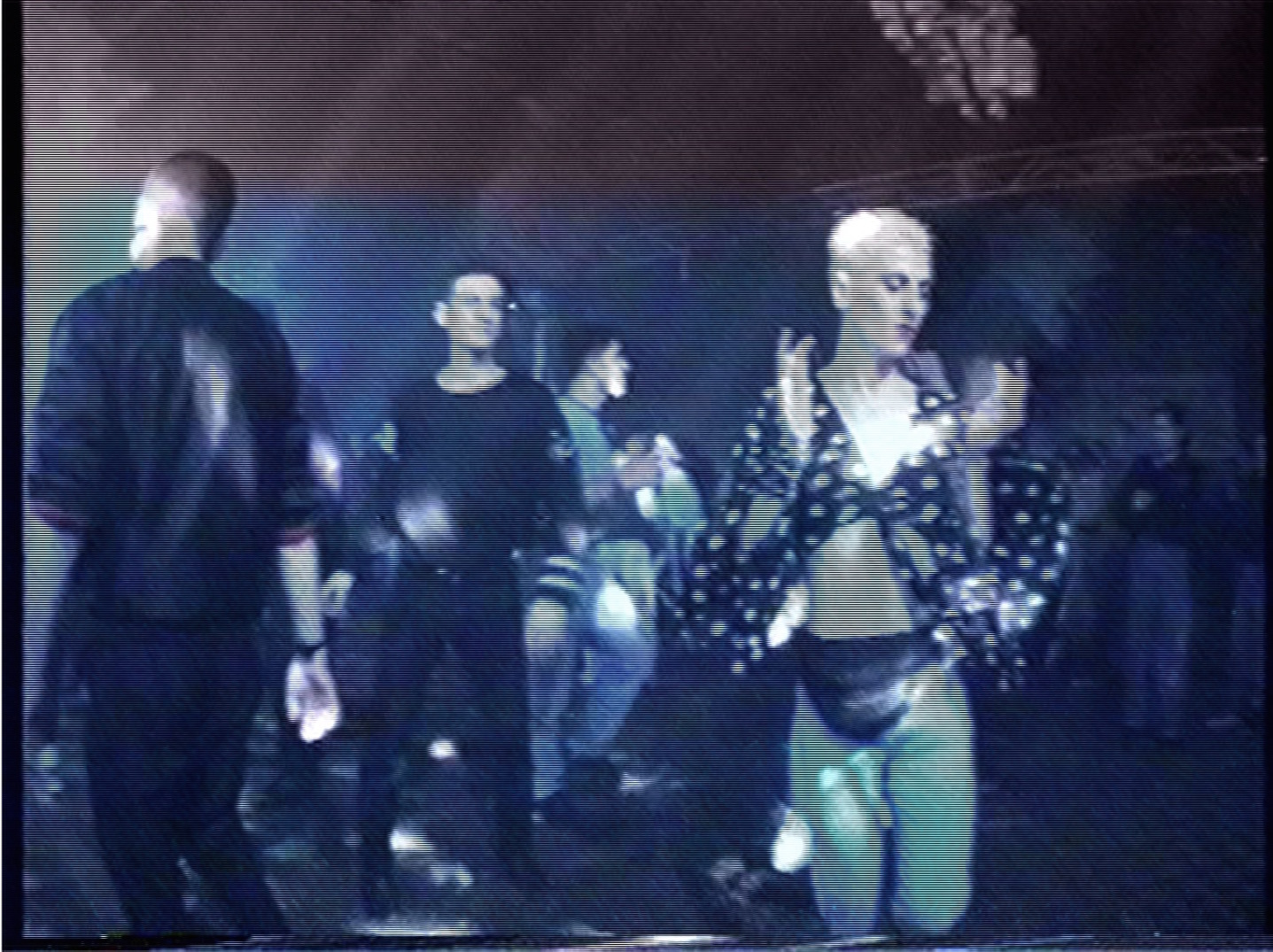Thump has just released an amazing film about the birth of Melbourne’s 90s rave scene and regardless of whether you were there, shuffling your way through it or not, it’s likely you’ll find it spectacular. Much of it is unseen footage of the defining parties which has, for the past fifteen years, been locked away in the back of a truck, along with recent interviews with the scene’s main players. It’s an important documentation of one of the city’s defining 90s subcultures. Oh, and it’s hilarious.
Tina Borg is a Melbourne-based fashion designer whose label of the same name became synonymous with raves and dance parties throughout the era. Her work was fun and clever and stocked in stores around the world. We spoke to Tina about her experience running her business during those heady years and how it all began and ended.
i-D: Hi Tina. How did you initially get into fashion?
Tina: In the late 80s, when I was about 15, I started making clothes for my sister who was really into the dance scene. Soon enough l was making clothes for her friends and podium dancers! Around the same time I did work experience at a clothing company called Wrong Shop that was local to where I was living. I just started making clothes and stocking shops like Draconia, Heaven and Wrong Shop to make some pocket money.
And what did the clothes you made look like then?
They were definitely very club-oriented, detailed and fun. Hoods were big back then designed into baby doll dresses, jersey tops and oversized bomber jackets with zip up hood details in contrast fabrics…that acid house feel I guess.
And how did your label develop?
While I in high school, it was just a project. After I finished I decided to do a full time intensive pattern-making course at a private college in the Century Arcade. To be honest though a lot of the technical aspect came from my mother who worked in the industry. Together these valuable skills formed the basis of being able to produce cleaver, interesting, and quality wears that lasted. I manufactured everything myself up until the early 90’s.
And when did the rave culture start to come into it? You said you remember going to the Biology party, what is referred to in the doco as Melbourne’s earliest rave.
I remember it was on the Yarra. I would have been 16 or 17. In terms of the fashion scene then, there were the kids who wore Nike Airs, Fila gear, jeans and t-shirts and were very street and sports driven. But then you also had the more fashion-oriented crew who were into wearing their chunky soled shoes, kickers and labels like Galaxy and Custard Shop. The Deee-Lite dolly look was popular and so was wearing lots of lycra. Taking inspiration from sc-fi films and pop culture a must. Colourful lycra bodysuits, smiley faces and Princess Leia hair-dos. It was amazing.
It definitely wasn’t boring.
Logos were huge as well as textures and bright colours. Anything that could enhance the visual experience, and anything you could dance in all night. I was obsessed with tech fabrics, track suiting of course, shiny triacetate, mesh, nylon and hard yakka scotch guarded fabrications. Utilising 3M details—and glow in the dark tapes were worked into the panelled designs… very cyber.
Where would you sell your clothes?
Early on it was places like Draconia and later shops like Renegade Cyberstore, Euphemism, Octave records and FAT. Stores that had clientele that were interested in music and clothing they could wear to dance parties and the like.
Was it amazing to see people on the dance-floor wearing your stuff?
It was, but l don’t think anyone ever knew it was me… l was very shy about it. I tried to keep it quite stealth, but I was very chuffed that people bought it, and personally l loved seeing the individual interpretation and styling of the garments.
When did your label finish?
2005 was the last collection. By that stage I was making more detailed garments for woman who had a comfortable outlook in their own sense of style. Intelligent and interesting pattern making worked its magic into beautiful textural fabrications and forms for the body.
Do you look back on it fondly?
I loved the music and I still do— it marked the beginning of a very exciting time in electronic music, but also in fashion. I still work in the industry and fashion will continue to evolve and be re-visited as is the music and the social scenes that both worlds bring together.
Credits
Text Briony Wright
